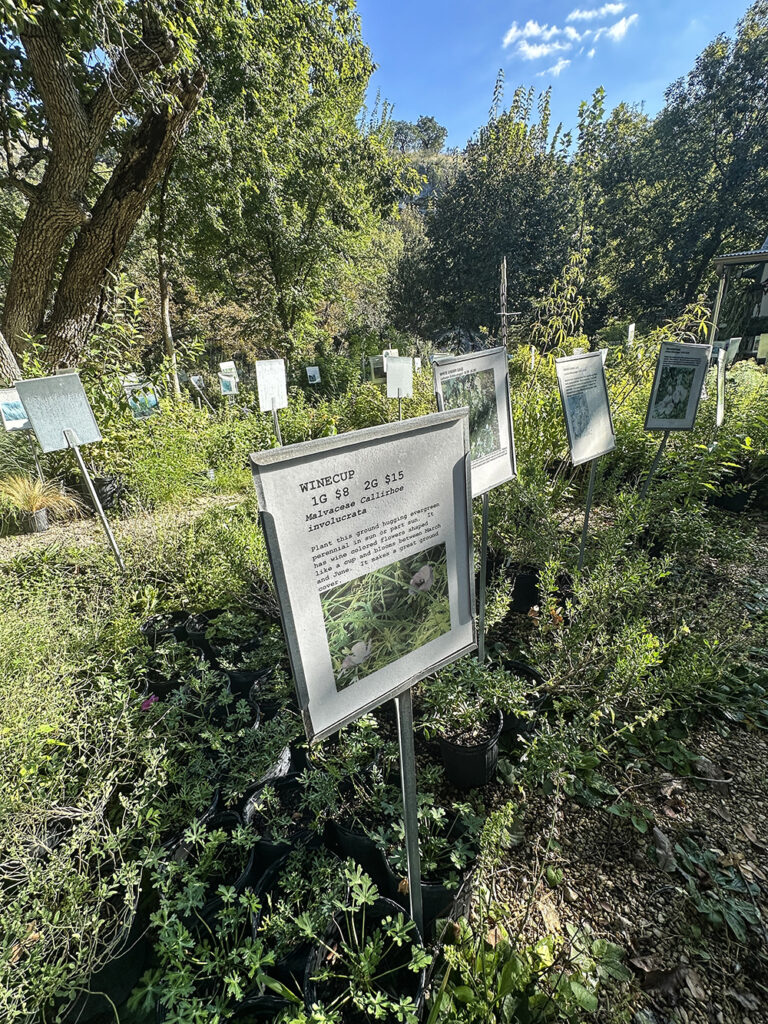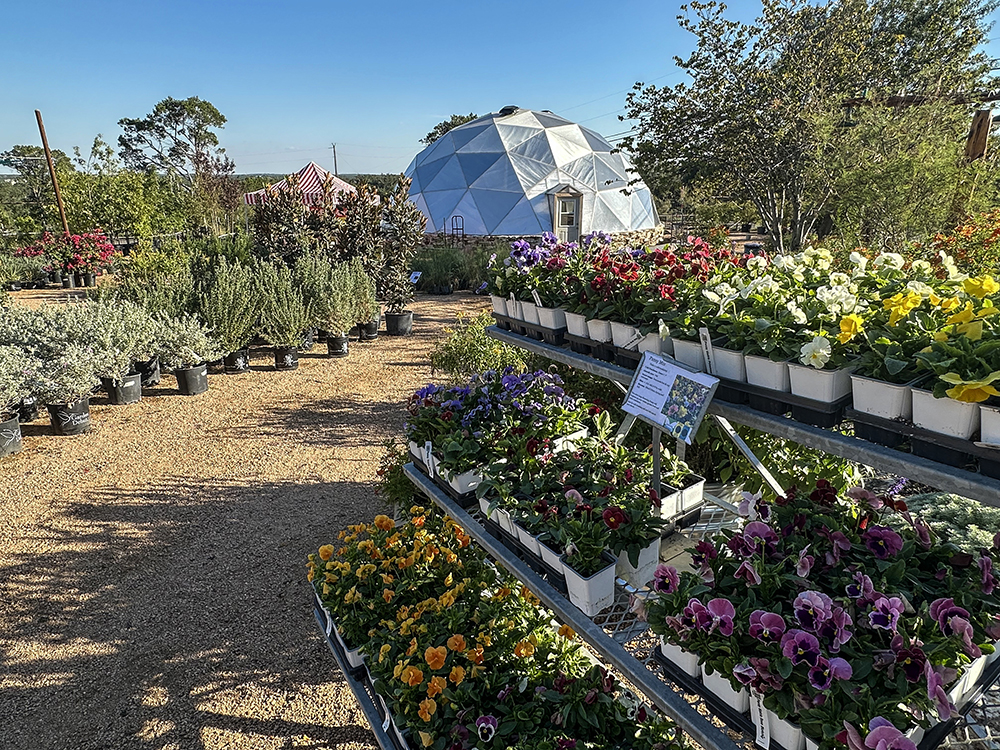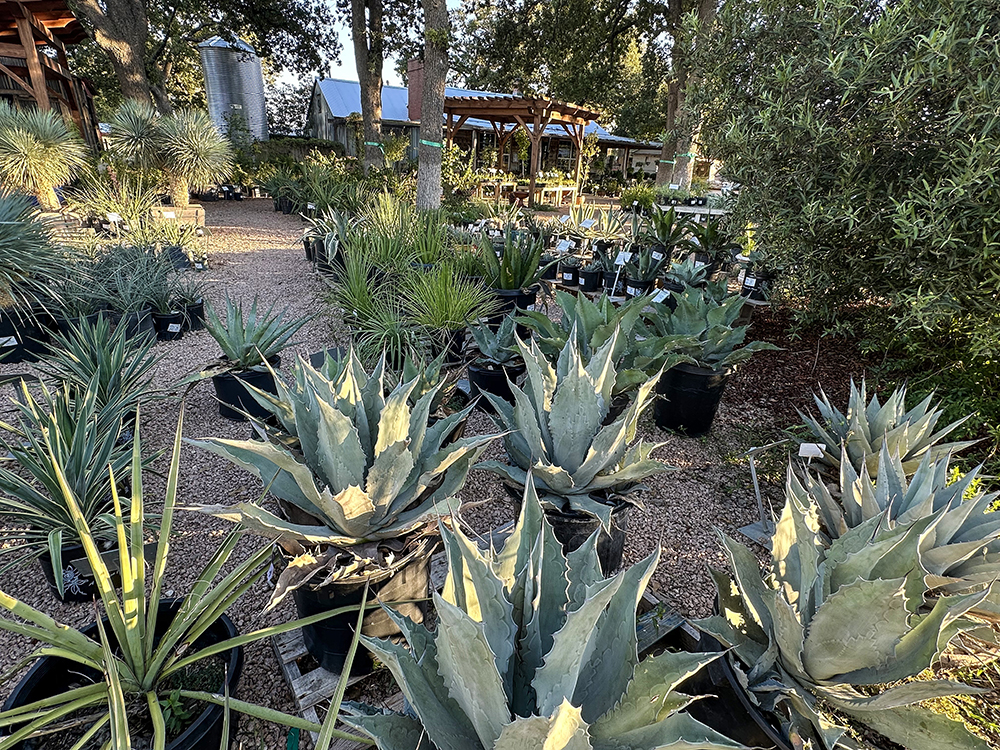At Friendly Natives Nursery in Fredericksburg, a sign proclaims, “gardening = optimism.” There is something about getting plants in the ground that raises our spirits.
Those who live in the Texas Hill Country know that when native plants are involved, fall color often proves to be prettier than spring. When homeowners and businesses landscape with native flowers, trees, grasses and shrubs, there is something in bloom almost all year long. And right now is the best time to plant.
“Fall is best for planting, especially trees and shrubs and perennials,” said DePaul Armijo, of The Gardens at The Ridge in Kerrville. When planted in fall, the roots have time to get established before cold weather sets in. Even when it’s hot as blazes in August and September, good old-fashioned TLC goes a long way toward helping plants adapt.
“You can plant in August as long as you live here or have a gardener who is cognizant of how to care for things,” said David Washington, owner of Natives of Texas in Kerrville. “You can’t just stick it in the ground and leave for Houston and come back in a month and expect it to be alive.”
Both Washington and Armijo say that although interest in xeriscaping has increased, there is still a lot of educating to be done. “People have to get away from the ‘pansy mentality,’ that it has to be in flower at the instant that you purchase it. That’s a mentality of annuals,” Washington said. “You don’t choose, with natives, to get instant gratification. It’s not just for now; it’s for the future.”

Armijo agrees. “People want color and not a lot of work. We all wish we could do poof, and our yards would be good, but the least work over the long haul is getting natives in the ground,” he said. “I always recommend doing a few plants at a time — one small area, 10×10. Get it going and then move on to another area. Be observant of your plants on a regular basis, to get to know them and see how they’re doing at different times of year.”
Interest in native plants in this part of the state has grown for a few reasons, and one is purely monetary. “The increase came from people opening up their water bill,” Washington said. “What was typical was to plant a bunch of St. Augustine and pour a bunch of water and chemicals on it — two wasteful things. To go heavy toward, ‘I’m gonna have the most perfect lawn, the envy of everyone who drives by,’ and maybe plant one nandina bush.”
Because native plants are more drought-tolerant, less water is needed, a benefit in the new normal of watering restrictions. Another reason people like native plants is because they are friendly to wildlife, especially butterflies. “The number of people wanting to do butterfly gardens has really increased because the message of saving the monarchs has gotten through,” Washington said. “There’s a larger group of people wanting to have plants friendly to insects, bees, and to provide for birds, especially hummingbirds.”
Some people seek native plants to address every Central Texas gardener’s dilemma: What can I plant that deer won’t eat? “A popular one is the copper canyon daisy. It has a distinguishing odor, and deer will not touch it. It’s inconspicuous during the summer, but in fall it’s covered with yellow flowers. Also Mexican bush sage, Texas lantana,” Armijo said. “But you still have to protect the plants at first because deer are nosy, and they’ll pick it out.”
Washington’s nursery, Natives of Texas, specializes in the madrone, a native tree that’s endangered. “It’s the same family as a rhododendron,” he said. “It’s evergreen with shiny leaves. It has the attraction of peeling bark in early fall, where the pinkish color of the trunk is exposed. In spring it has a lovely cluster of flowers. It’s a dense hardwood, as hard as mahogany. It has a high success rate, but you have to be patient.”
Armijo encourages mulching all plants — especially trees. “I follow the 2-2-2 method: Two inches of mulch, twice a year in spring and fall, and keep it 2 inches away from the crown of the plant,” he said. “Mulch regulates the temperature of the ground and also retains moisture, so there’s less watering. The third benefit is it breaks down over time and helps feed the soil.”
Armijo warns that the mistake most gardeners make is overwatering. “We love our plants to death. Plants need oxygen and water. If they’re full of water all the time, they can’t get the oxygen,” he said. “When you do water, water thoroughly.”
As the season turns to autumn, the Hill Country comes alive with color and beauty. The old stereotype of native plants as ugly weeds is being replaced with questions: What is that? How hard is it to grow? Can I plant it now?

A partial list of native and well-adapted plants
Trees:
Burr oak
Cedar elm
Chinkapin oak
Flameleaf sumac
Lacey oak
Madrone
Mexican plum
Monterrey oak
Pride of Barbados
Texas redbud
White desert willow
Shrubs:
Agarita
Cenizo/Texas sage
Fragrant sumac
Possumhaw holly
Grasses:
Pink muhly
Side-oats grama
Flowers:
Black foot daisy
Damianita
Fall aster
Gregg’s mist
Sunflower
Zexmenia
Succulents:
Agave and century plant
Barrel cactus
For more information
Consult your local nursery to learn more about fall gardening:
friendlynatives.com
nativesoftexas.com
shopsattheridge.com


